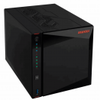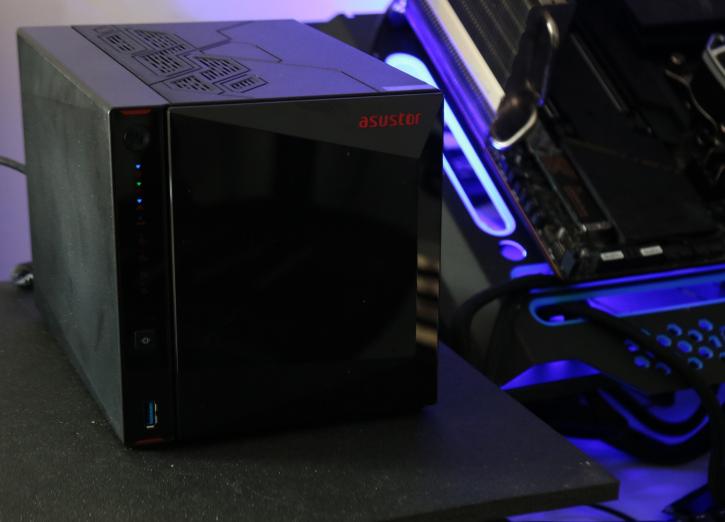Final Words & Conclusion
Conclusion
The technology industry is witnessing a significant shift towards NAND-based flash storage, with prices becoming more affordable and overall SSD reliability improving. In line with this trend, NAS units are also embracing this change. The new ASUSTOR AS5404T offers a seamless combination of both worlds, integrating HDD and NAND storage technologies while delivering impressive performance. Although a 10 Gbps connector would have been preferable, the 2.5 GigE Ethernet providing close to 300 MB/sec still offers commendable value. I can confidently say that these NAS servers offer a comprehensive and versatile solution for both business and home use, especially with streaming media in mind. Whether you need advanced business features or a reliable media player, these NAS units can handle it all. In fact, you can easily turn one into a PLEX movie player NAS by connecting it to your TV via HDMI, and with a keyboard and mouse, you're good to go after a straightforward installation process.
Now, the question arises: Should you go for SSDs or HDDs? As SSD prices continue to drop and reach the 5 cents per GB level, I strongly recommend SSDs. Not only do they offer better endurance and eliminate mechanical moving parts, but they also consume less power, which is crucial for devices that stay powered on all the time. QLC NAND-based SSDs are particularly well-suited for NAS applications. Also your IO values dramatically go up, making response time much better. Under the hood, the Asustor AS5404T is powered by the Celeron J5105 (JasperLake) quad-core CPU, running upwards to a 2.9 GHz Turbo clock frequency. This CPU provides ample performance and effortlessly handles the data throughput over the 2.5 Gbps jack. The 4GB of memory included is more than sufficient, and for those with higher demands, it can be upgraded to 8GB. Additionally, the ADM software stack is highly efficient with memory usage,if you're not into database and web-based stuff on your NAS, that 4 GB is fine.
Pricing
This review discusses a NAS unit currently not available everywhere, priced at $529 for the four-bay model with a quad-core processor, 4GB RAM, and two 2.5 Gbps jacks. The two-bay model is listed at a far more attractive $369, making it highly recommended due to its dual HDD and NVMe possibilities. While the cost may be significant for consumers, it remains affordable for small office/home office (SOHO) or business use. The investment is justified considering its long-term value. However, buyers need to consider additional costs for HDDs/SSDs and a compatible 2.5/5/10 Gbps switch for multi-GigE LAN infrastructure. On the client side, many motherboards already have built-in 2.5, 5, or 10 Gbps Ethernet jacks, saving the expense of a separate 10 Gbps Ethernet NIC.
- AS5402T MSRP: $369 diskless/SSDless
- AS5404T MSRP: $529 diskless/SSDless
- AS5404T MSRP: €599 diskless/SSDless
Energy Efficiency
In a single SSD configuration, the NAS consumes approximately 12 Watts, an decent feat for its stamina. The energy-efficient Celeron J5105 (Gemini Lake) quad-core CPU has a maximum TDP of just 10 Watts, even under full load. When you factor in the power consumption of your SSDs or HDDs, you can get a clear idea of the overall energy usage. If your HDDs remain unused for a certain period (e.g., 30 minutes or a user-configured sleep time), they will enter sleep mode, consuming minimal power. Additionally, the unit provides a hibernation mode, during which it consumes less than a watt while sleeping. Considering that NAS units often run 24/7 throughout the year, energy efficiency becomes a crucial factor. With some rough calculations, assuming an average consumption of 15 watts, the estimated cost per year amounts to approximately 53 Euros, considering an electricity cost of 0.40 KWh/eur.
Final Words
The Asustor AS5404T NAS stands out as a promising option for this year, particularly with its incorporation of two 2.5 Gbps Ethernet interfaces as a new standard. While some may question why not opt for 5 or 10 Gbps jacks, the rationale behind this choice lies in cost considerations. As NAS servers are designed for the consumer market, it is essential to strike a balance between premium features and affordability. This unit seeks to offer excellent performance without imposing enterprise-level prices. The extensive software suite accompanying these units empowers users to explore various functionalities, catering to both tech-savvy individuals and novices alike. Whether you require advanced configurations or prefer a more straightforward approach, this NAS has got you covered. Asustor has made significant strides with its Multi-GigE solutions and then adding NVMe capabilities, earning our applause. The NAS is reasonably priced, and while additional investments are required for a Multi-GigE switch and client-side equipment, it offers flexibility as you can initially connect it to your 1 Gbps LAN. Later, as motherboards with native 2.5, 5, or 10 Gbps Ethernet jacks become more common, you can upgrade your setup for faster speeds. With sufficient SSD storage or a RAID configuration, you can achieve impressive performance, reaching speeds of around 250-300 MB/sec over your LAN. The Asustor AS5404T stands out as one of the top NAS units this year, boasting a powerful SoC, support for 4x SSD/HDD, 4x NVMe, two 2.5 GigE jacks, HDMI, and a near perfect software suite.
While we tested the 4-bay version i really want you to focus on the 2-bay unit priced at $369, as it offers tremendous value, accommodating 4x NVMe M.2 SSDs. Additionally, the three-year warranty adds to the appeal of this NAS, making it a highly recommended choice.
Give ASUSTOR a visit here.
- Sign up to receive a notification when we publish a new article
- Or go back to Guru3D's front page.



